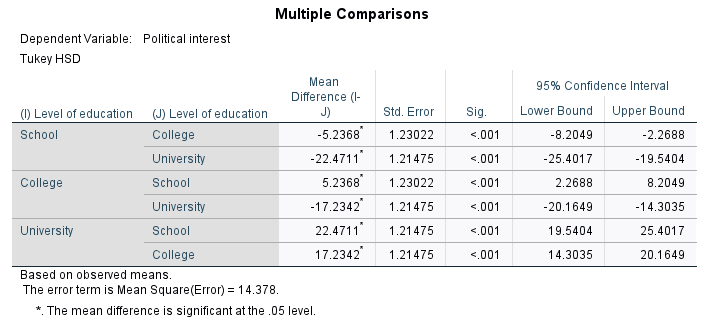

Very basically, 100 participants suffering from depression were divided into 4 groups of 25 each. The screenshot below shows it in variable view. After reading it, you'll know what to do and you'll understand why. We'll run the analysis by following a simple flowchart and we'll explain each step in simple language. To obtain a morereadable result we can create a DataFrame that will contain our ANOVA table.SPSS Two-Way ANOVA with Interaction Tutorial By Ruben Geert van den Berg under ANOVAĭo you think running a two-way ANOVA with an interaction effect is challenging? Then this is the tutorial for you. The results are, right now, stored in a lot of variables. Doing that we need to use our F-value for each effect and interaction as well as the degrees of freedom for them, and the degree of freedom within. We can use the scipy.stats method f.sf to check if our obtained F-ratios is above the critical value. The F-statistic is simply the mean square for each effect and the interaction divided by the mean square for within (error/residual). Mean Square Within/Error/Residual ms_w = ssq_w/df_w We continue with the calculation of the mean square for each factor, the interaction of the factors, and within. Since we have a two-way design we need to calculate the Sum of Squares for the interaction of A and B. Sum of Squares Total ssq_t = sum((data.len - grand_mean)**2)įinally, we need to calculate the Sum of Squares Within which is sometimes referred to as error or residual. ssq_b = sum(.len.mean()-grand_mean)**2 for l in data.dose]) ssq_a = sum(.len.mean()-grand_mean)**2 for l in data.supp])Ĭalculation of the second Sum of Square, B (dose), is pretty much the same but over the levels of that factor. We start with calculation of Sum of Squares for the factor A (supp). The grand mean is simply the mean of all scores of len. Using Pandas DataFrame method mean on the dependent variable only will give us the grand mean: grand_mean = an() Sum of Squares partitioning of the Sum of Squares (SS)įor the calculation of the sum of squares A, B and Total we will need to have the grand mean.

Degrees of Freedom N = len(data.len)ĭf_w = N - (len(())*len(())) After we have the degree of freedom we continue with calculation of the sum of squares. We will use them later to calculate the mean square. First we start with getting the sample size (N) and the degree of freedoms needed. The calculations of the sum of squares (the variance in the data) is quite simple using Python. Interaction plot using Statsmodels Calculation of Sum of Squares fig = interaction_plot(data.dose, data.supp, data.len,Ĭolors=, markers=, ms=10)

We are going to use the method interaction_plot. statsmodels has methods for visualising factorial data. It can be good to explore data before continuing with the inferential statistics. Pandas is used to create a dataframe that is easy to manipulate. In the last, and third, method for doing python ANOVA we are going to use Pyvttbl. As in the previous post on one-way ANOVA using Python we will use a set of data that is available in R but can be downloaded here: TootGrowth Data.
Two way anova spss code code#
In the code above we import all the needed Python libraries and methods for doing the two first methods using Python (calculation with Python and using Statsmodels). Python 2-way ANOVA import pandas as pdįrom import anova_lmįrom import interaction_plot We discussed linear models earlier – and ANOVA is indeed a kind of linear model – the difference being that ANOVA is where you have discrete factors whose effect on a continuous (variable) result you want to understand. The only restriction is that the number of observations in each cell has to be equal (there is no such restriction in case of one-way ANOVA). One can also test for independence of the factors provided there are more than one observation in each cell. Unlike One-Way ANOVA, it enables us to test the effect of two factors at the same time. It can also be used to analyse the mean responses in an experiment with two factors. Two-way ANOVA (factorial) can be used to, for instance, compare the means of populations that are different in two ways. There are two assignable sources of variation – supp and dose in our example – and this helps to reduce error variation thereby making this design more efficient.
Two way anova spss code how to#
In this post we are going to learn how to do two-way ANOVA for independent measures using Python.Īn important advantage of the two-way ANOVA is that it is more efficient compared to the one-way. In an earlier post I showed four different techniques that enables two-way analysis of variance (ANOVA) using Python.


 0 kommentar(er)
0 kommentar(er)
